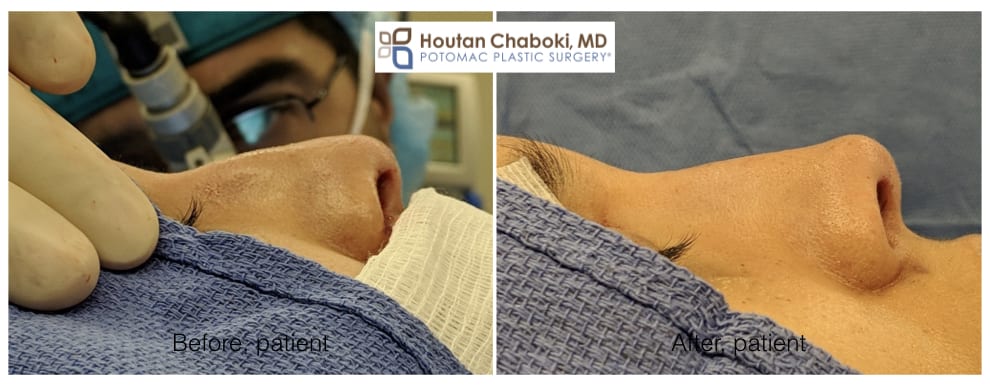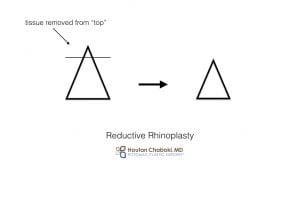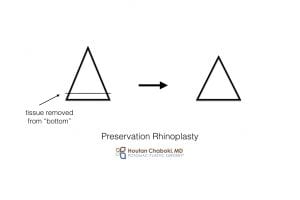
Preservation rhinoplasty performed via a closed, endonasal approach to improve the profile and reduce a bump. Dr. Chaboki, a Washington DC rhinoplasty specialist, typically performs bump reduction before tip surgery during rhinoplasty. Smooth and natural result!
Patients generally understand 2 main types of rhinoplasty: open and closed. Open rhinoplasty makes an incision between the nostril in order to access the cartilage and bone of the nose. Closed rhinoplasty, also known as endonasal, modifies nasal bone and cartilage without any external incisions.
Rhinoplasty surgery can also be categorized as reductive and preservation. This classification refers to the method of changes to the bone and cartilage, rather than the approach itself to the nasal tissue.
Preservation Rhinoplasty
One of the main components of the preservation rhinoplasty procedure is to preserve the bone and cartilage of the bridge of the nose when reducing a bump. Conceptually, instead of reducing the size of a tower by removing the top, the size of the tower is reduce by reducing the feet and settling in down. The result is a smoother, natural bridge during hump reduction.


Surgeons who Perform Preservation Rhinoplasty
Rhinoplasty is considered the most difficult cosmetic surgery by plastic surgeons. Closed rhinoplasty is more difficult to learn, and closed preservation rhinoplasty has an even higher learning curve for some surgeons. Dr. Chaboki is one of a few select rhinoplasty specialists in the US who perform preservation surgery.
A majority of rhinoplasty surgeons in the US perform reductive rhinoplasty primarily via an open approach. Open rhinoplasty is easier to learn for plastic surgeons. As a result, fewer surgeons perform closed rhinoplasty, which avoids an external scar and has less swelling compared to the open. Perhaps only a handful of US rhinoplasty surgeons perform closed preservation rhinoplasty due to its technical challenges and difficulty learning for the surgeon. However, closed preservation rhinoplasty has many benefits for the patient.
Benefits of Preservation Rhinoplasty
Bridge preservation allows the plastic surgeon to keep the normal anatomy intact as much as possible. Swelling and bruising can be improved with preservation of the bridge. Some surgeons maintain the skin on the cartilage to allow even easier recovery.
Primary rhinoplasty patients with a bump, ie. doing rhinoplasty the first time, are good candidates. Patients with thin skin are especially good candidates for preservation rhinoplasty as the results tend to be much smoother in the long-term as compared to traditional reductive techniques.
In the video, Dr. Chaboki performs preservation rhinoplasty via a closed, endonasal approach to reduce a bump. External incisions or scars are not used with the closed approach. Dr. Chaboki typically performs bump reduction (as seen in the video) before tip surgery during rhinoplasty. He is pushing down the bump to improve the profile for natural results. Tip modification is performed later during the rhinoplasty operation.
Contact the office to see if you’re a candidate for preservation rhinoplasty.

Leave a Reply